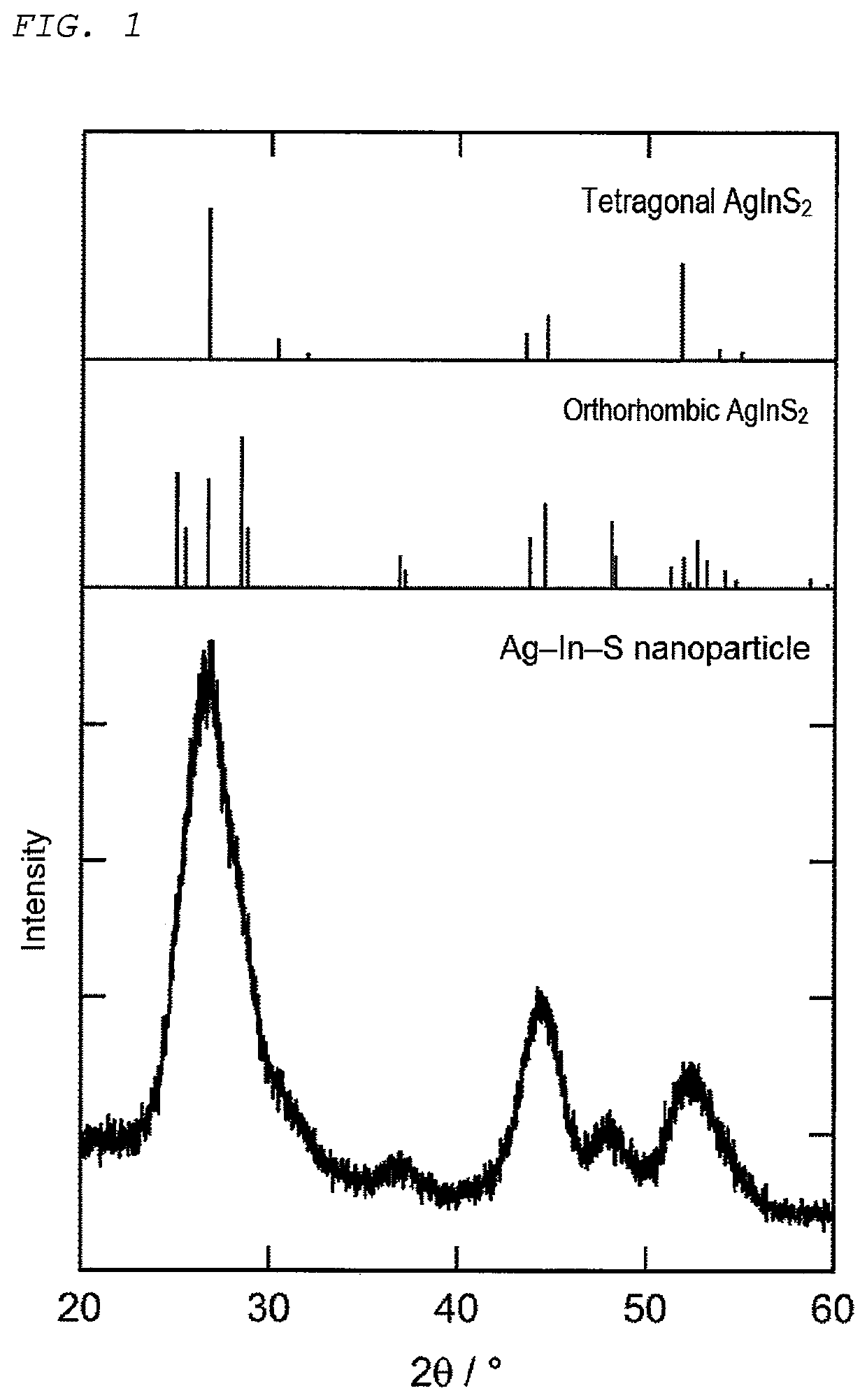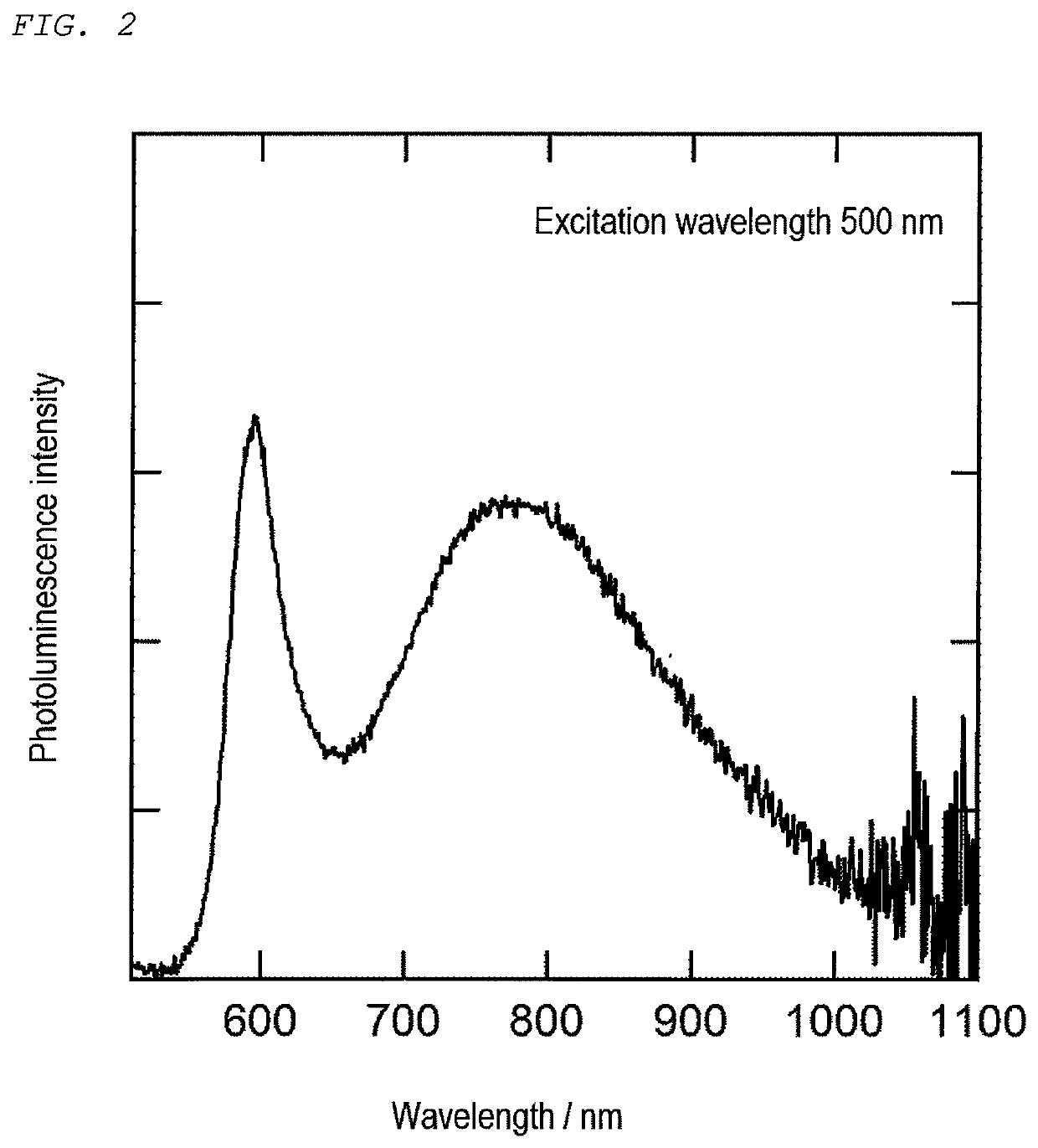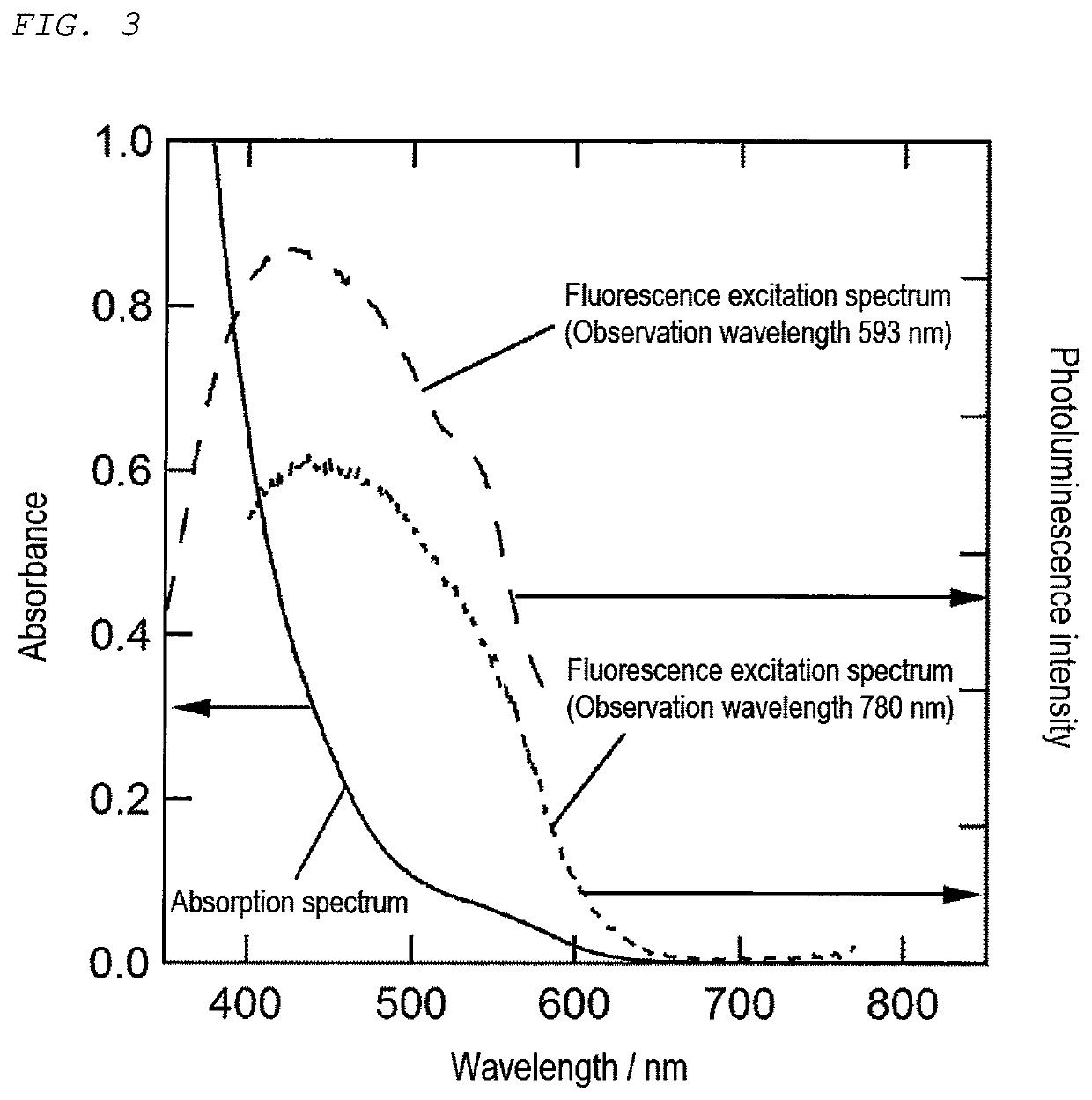Semiconductor nanoparticles and method of producing semiconductor nanoparticles
a technology of semiconductor nanoparticles and nanoparticles, which is applied in the field of semiconductor nanoparticles, a method of producing semiconductor nanoparticles, and a light-emitting device, which can solve the problems of high toxicity and unsuitable light-emitting devices
- Summary
- Abstract
- Description
- Claims
- Application Information
AI Technical Summary
Benefits of technology
Problems solved by technology
Method used
Image
Examples
example 1
(1) Production of Primary Semiconductor Nanoparticles (Ag—In—S)
[0129]First, 0.4 mmol of each of silver acetate (AgOAc) and indium acetate (In(OAc)3), 0.8 mmol of thiourea, 11.8 mL of oleylamine, and 0.2 mL of 1-dodecanethiol were charged into a two-necked flask and subjected to vacuum deaeration (for 3 minutes at normal temperature), followed by heating under an Ar atmosphere at a temperature increasing rate of 10° C. / min up to 200° C. The obtained suspension was allowed to cool, followed by centrifugal separation (with a radius of 150 mm at 2,500 rpm for 10 minutes), so that a supernatant dark red liquid was taken out. Then, methanol was added to the supernatant solution until nanoparticles were precipitated, followed by centrifugal separation (with a radius of 150 mm at 2,500 rpm for 3 minutes). Then, the precipitates were dried at the normal temperature under vacuum, thereby producing semiconductor nanoparticles (primary semiconductor nanoparticles).
[0130]An XRD pattern of the ob...
example 2
[0138]First, 10 nmol of the primary semiconductor nanoparticles, obtained in the same procedure as in Example 1, at amount of nanoparticles was dispersed into 12 mL of oleylamine to obtain a dispersion, which was then held at 260° C. under an Ar atmosphere. Separately from this, gallium acetylacetonate (Ga(acac)3) and sulfur powder were added to oleylamine at concentrations of 0.1 mmol / mL and 0.15 mmol / mL, respectively, and then stirred at 100° C. for 10 minutes, so that the gallium acetylacetonate and sulfur powder were dissolved and a mixture was obtained. Then, 4 ml of the mixture was dropped into the above-mentioned heated dispersion at a rate of 5 mL / h (at 0.5 mmol / h based on Ga). When the addition of the mixture is finished, the heating source was turned off, allowing the solution containing the dispersion with the mixture to cool down to the room temperature. Thereafter, methanol was added to the solution, so that precipitates of the core-shell semiconductor nanoparticles is ...
example 3
[0142]First, 30 nmol of the primary semiconductor nanoparticles, obtained in the same procedure as in Example 1, at amount of nanoparticles, 0.1 mmol of gallium acetylacetonate (Ga(acac)3), 0.05 mmol of dibenzyldisulfide and 12 mL of oleylamine were charged into a flask and then heated to 260° C. at a temperature increasing rate of 10° C. / min. After the solution was held at 260° C. for 20 minutes, the heating source was turned off, allowing the solution to cool. Thereafter, methanol was added to the solution, so that precipitates of the core-shell semiconductor nanoparticles is obtained. Then, solid components were collected from the solution by centrifugal separation (with a radius of 150 mm at 2,500 rpm for 3 minutes). The solid components were dissolved into chloroform, and then various properties of the obtained core-shell semiconductor nanoparticles were measured. Upon measuring an average particle size of particles each covered with the shell, the average particle size of the ...
PUM
| Property | Measurement | Unit |
|---|---|---|
| full width at half maximum | aaaaa | aaaaa |
| full width at half maximum | aaaaa | aaaaa |
| full width at half maximum | aaaaa | aaaaa |
Abstract
Description
Claims
Application Information
 Login to View More
Login to View More - R&D
- Intellectual Property
- Life Sciences
- Materials
- Tech Scout
- Unparalleled Data Quality
- Higher Quality Content
- 60% Fewer Hallucinations
Browse by: Latest US Patents, China's latest patents, Technical Efficacy Thesaurus, Application Domain, Technology Topic, Popular Technical Reports.
© 2025 PatSnap. All rights reserved.Legal|Privacy policy|Modern Slavery Act Transparency Statement|Sitemap|About US| Contact US: help@patsnap.com



